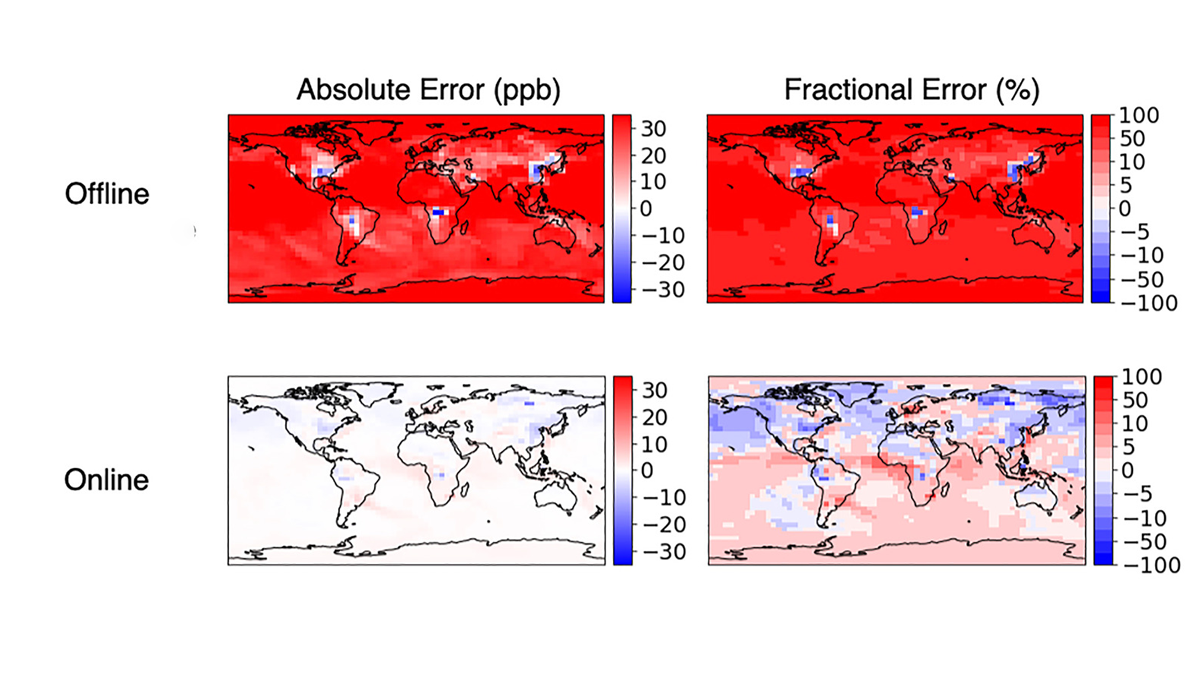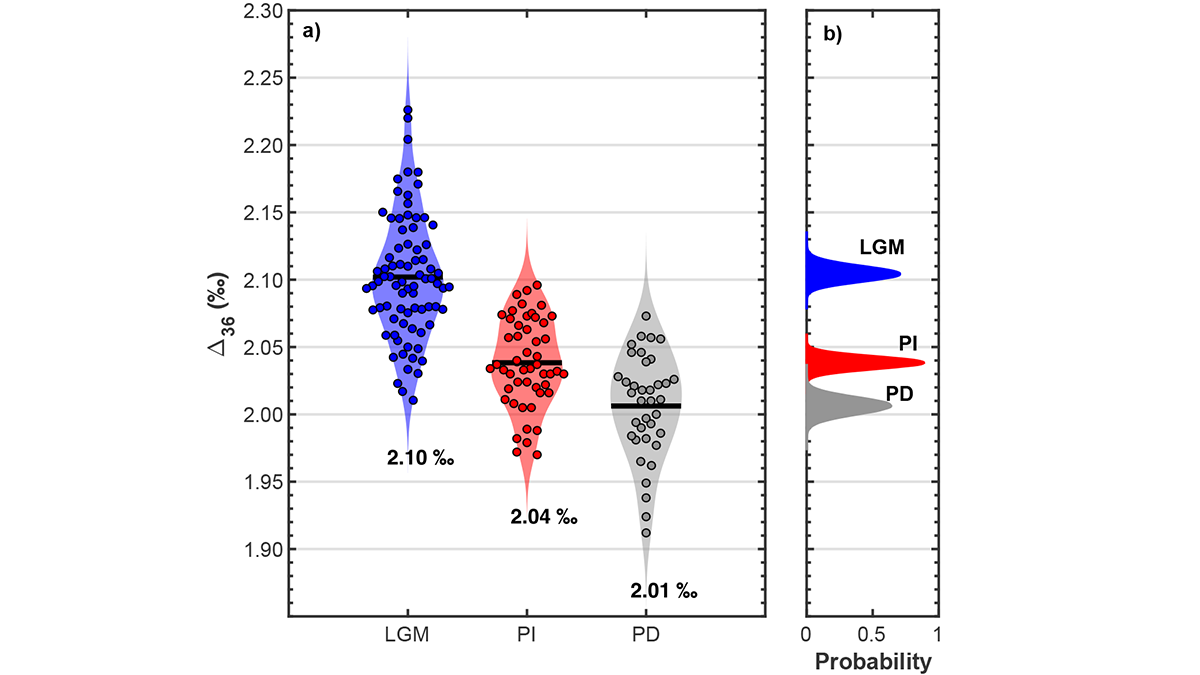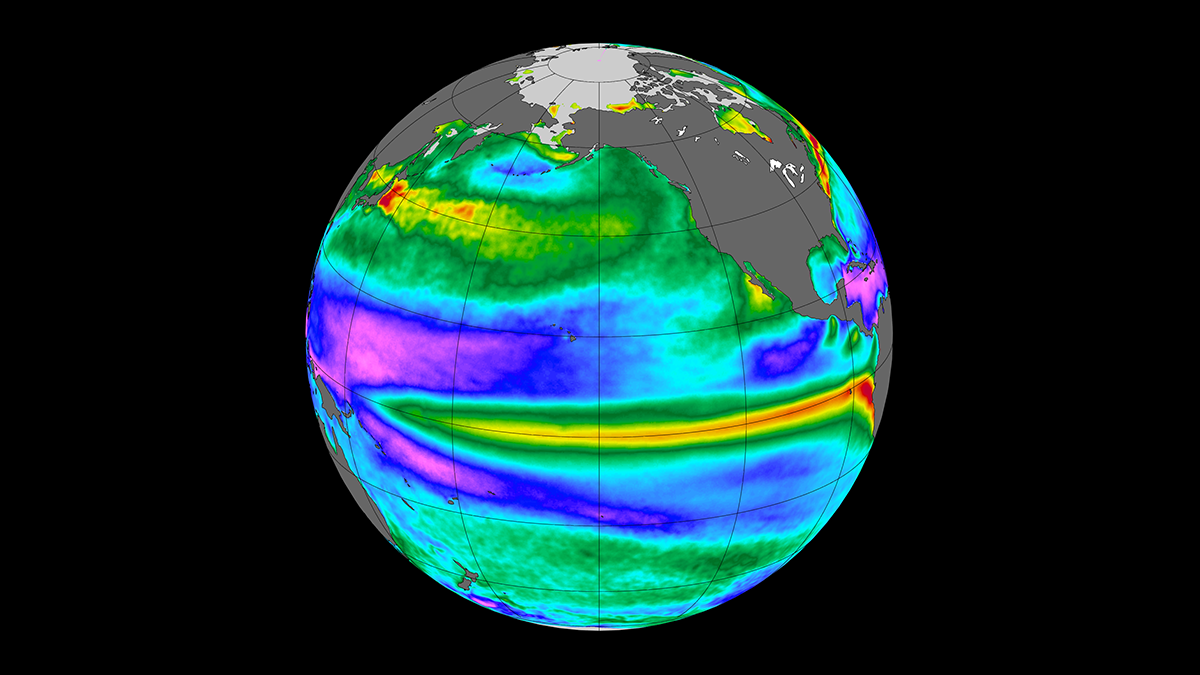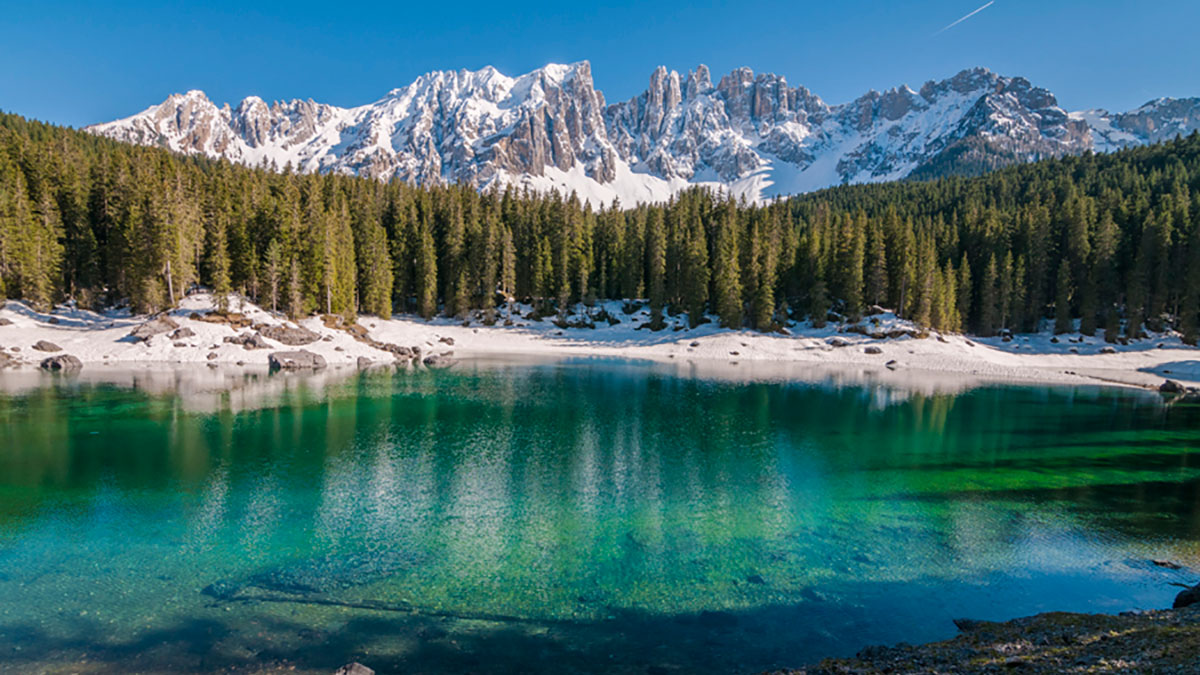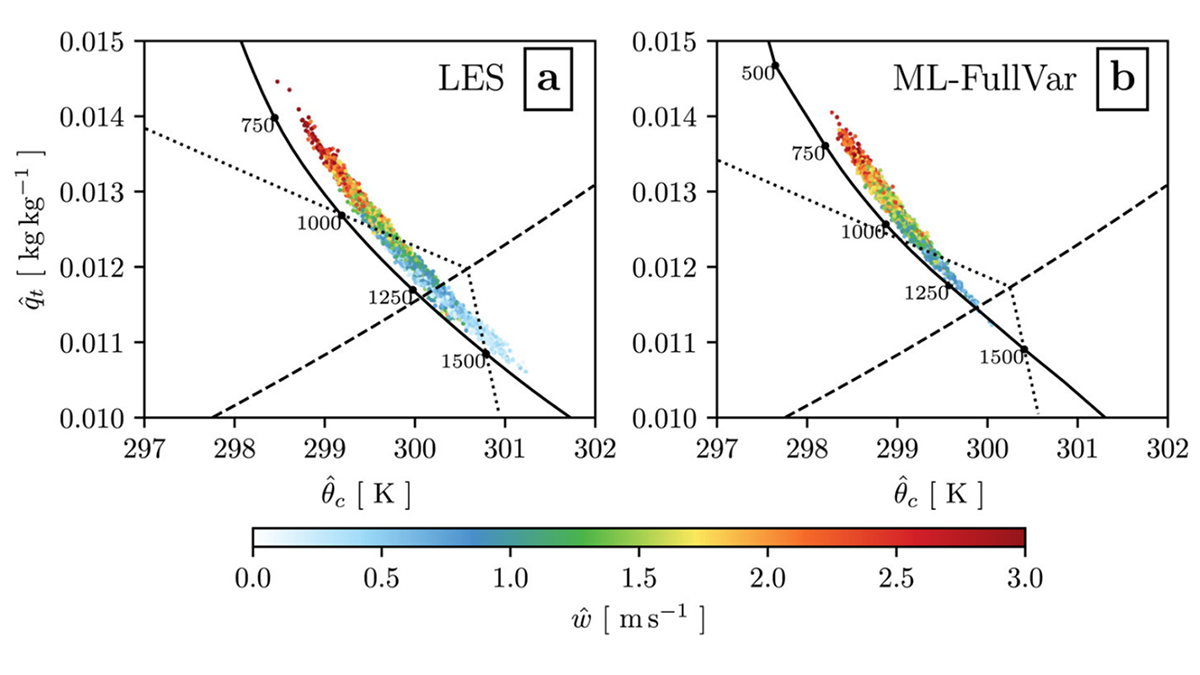A new study focuses on the frequency and distribution of tropical cyclones over the past 40 years.
everything atmospheric
Accurate and Fast Emulation With Online Machine-Learning
Online training produces more accurate and stable machine-learned models than classic offline learning from big data sets.
Tonga Volcanic Eruption Produced Ionospheric Hole and ‘Bubbles’
The 2022 Tonga volcano eruption altered the global ionosphere, creating a huge ionospheric hole locally near the epicenter and large-amplitude plasma bubbles remotely over the Asia-Oceania area.
New Tool to Decipher Past Upper Troposphere Temperatures
Small variations in clumped O2 isotopes reflect temperatures in the upper troposphere. Bubbles measured in polar ice cores show the global lapse-rate appears to steepen during the Last Glacial Maximum.
Spatial Scale Shapes the Ocean and Atmosphere’s Influence on the Climate
Researchers measured the processes driving heat exchange between the Pacific Ocean and the atmosphere.
Earth’s Lakes Emit Less Methane Than Previously Thought
Although the total surface area of Earth’s lakes emits less methane than previously believed, it is still among the largest natural methane sources.
Machine Learning Emulation of Atmospheric Radiative Transfer
Using machine learning to represent sub-grid processes in weather and climate models holds promise, but also faces challenges. Incorporating physical knowledge can help.
A Unified Atmospheric Model for Uranus and Neptune
In a new model, three substantial atmospheric layers appear consistent between the ice giants.
Modeling Entrainment with Machine Learning
Researchers present a new approach to modeling the stochastic mixing process of convection using a machine learning technique.


